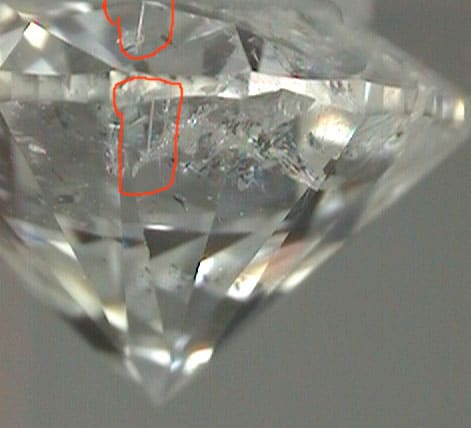Searching for the perfect diamond is a serious undertaking. There are so many shops that try to scam their clients or sell products that aren’t the real deal. In addition to this, no diamond type is like the other. There are several quality criteria that the gems must meet, including the 4cs of diamonds, as well as quality grading, shape etc. Today we would like to take a closer look at the most important things to look for when purchasing a new diamond.
The 4Cs of Diamonds
– Clarity
– Cut
– Carat
– Color
We have already discussed Diamond Fluorescence and diamond 4cs in a previous article, so we will not insist on the topic. The only thing we’d like to mention here is that the value of a diamond is calculated according to its cut, clarity, color and carat and the solitaire diamond is arguably the most valuable of them all.
We would also like to mention, what we believe to be the 5th “C” – care. Even if you buy the most expensive and beautiful diamond in the world, it will not look a lot better than a lower quality one that is tended after. We recommend that you take your jewelry to an expert once every 6 months to have it cleaned.
1. Diamond Shapes – Most popular Diamond Shapes
One of the first things that prospective buyers look for, even before the 4cs of diamond grading, is the shape of the jewel. The key here is to choose the perfect combination of color, size and shape. Below you can find the most common shapes of diamonds:
- Princess Cut Diamond: this diamond shape was first created back in the 80s. It is probably the most common and fancy shape of diamond, preferred especially on engagement rings. The great thing about it is the fact that it works with almost any type of ring.
- Oval Diamonds: this is a modified brilliant-cut, which basically means two diamond shapes with similar brilliance and fire. One thing to be noted about this shape is the fact that it possesses an elongated shape which makes it seem larger than it actually is.
- Marquise Diamond: The top view of the marquise diamond looks strikingly similar to a football. This is also a modified brilliant cut that creates the illusion of greater size. Statistically, this type of diamond has one of the largest surface areas of any diamonds.
- Round Diamonds account for approximately 75% of all diamonds sold on the market at present. That is because the mechanics of this shape is superior to any fancy cut. Reflection of light, clarity and potential brightness is at maximum levels with this shape.
- Pear-shaped Diamond: a combination cut, with a marquise shape and tapered point on one end. In the ideal situation: when a pear-shaped diamond possesses great symmetry and maximum quality of clarity and carat, it displays extraordinary beauty. When purchasing a pear-shaped diamond you should keep an eye out on the wings and shoulders of the gem – they should form symmetrical curves.
- Emerald Cuts: This diamond shape is extremely easy to recognize, due to the step cuts on the pavilion. These shapes produce hall-of-mirrors effects and light play.
- Radiant cut diamonds: are the first diamond shapes to have complete brilliant-cut facet patterns applied on the pavilion and crown. The modified shape creates a nice image between the cushion and princess cut.
- Heart Shaped Diamonds: we believe that this is one of the most difficult shapes to obtain, especially in diamonds with less than .50 carats. Heart shaped diamonds represent the irrefutable symbol of love and they can be an ideal choice for engagement rings or gifts.
Instinctively, people develop a preference for a type of cut. If you are buying the diamond as a gift to someone, you should try to ask them about the cut that they most like first. A diamond is an expensive gift, so you should make sure that you get it right.
2. Diamond Carat Size Comparison
It is no secret that two diamonds, with extremely different shape and size, may have the same carat weight. The shape you choose will also influence the perceived size of your jewel. Below you can view a table of approximate size, measurements and crown area for each diamond shape.
Note: The crown area can give a buyer a good idea about the true size of a diamond face-up (as it will be visible on a ring). Oval, marquise, pear and emerald cuts may appear larger than a round diamond, when they have the same surface. The difference in size becomes one of perception, not reality.
3. Types of Diamond Flaws
Besides the imperfections described in our Diamond 4Cs guide, there are several other flaws that a buyer should bear in mind before any purchase. Unique markings – internal or external – affect the diamond’s clarity and quality. Below you can find a list of external and internal imperfections that affect the overall value of a stone.
a.Internal flaws:
- nicks – small surface chips
- chips – small cracks along the external age
- bearded/feathered girdle
- cavity – opening on surface
- carbon spot – included crystal
- laser drill whole
- scratches and pinpoints
- grain/twinning line – irregularity resulted from crystal growth
b. External flaws:
- fractures
- pits – small indentation on the surface
- natural / unpolished surfaces (original skin of the diamond)
- fracture / break
With all this information at his/her disposal, the buyer can make an education decision. Always keep in mind the 4cs of diamonds, as well as flaws and shapes when making a purchase. It’s also a good idea to consult with an expert before actually buying such a pricey gem.









